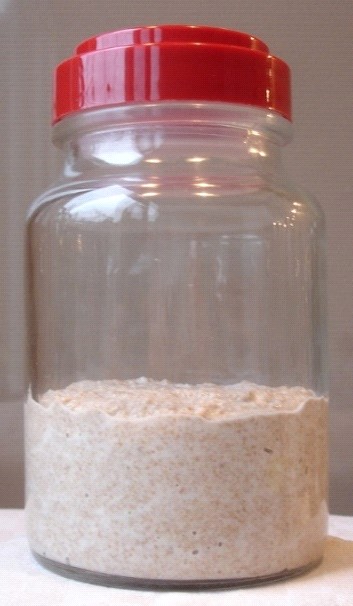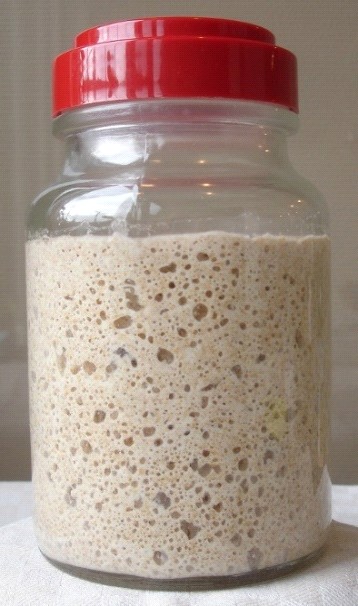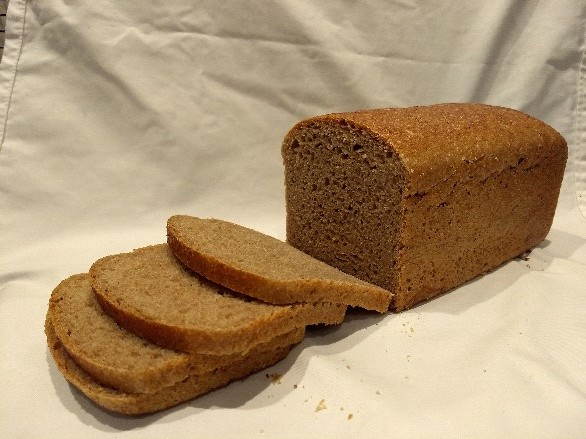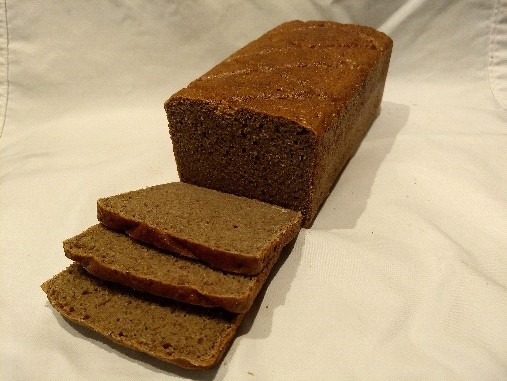Sourdough instruction
Below are two preparations with our Organic Rye Sourdough Starter Powder.
And two basic recipes for making sourdough bread.
This information can also be downloaded as a PDF document:
Rye sourdough preparation I :
Rye sourdough powder 1.000 g
Rye flour 1.000 g Water (28˚C.) 3.000 g
Salt 20 g
Yeast 2 g
Total 5.022 g
Process:
Storage: Shelf life up to 5 days in the refrigerator
Addition: Variable up to 40% based on flour weight. (except 100% rye recipe)
|
Rye sourdough preparation II
& sourdough starter
(without added yeast ):
Step 1:
Rye sourdough powder 100 g
Whole wheat rye flour 100 g Water (30˚C.) 200 g
Total 400 g
|
Process:
|
Step 2 (restart/refresh):
Rye sourdough from step 1 250 g
Whole wheat rye flour 125 g Water (30˚C.) 125 g
Total 500 g
|
Process:
|
Step 3 (restart/refresh):
Repeat step 2 three to five times until the sourdough has doubled in volume as it matures. Then the dough is ready for use.
|
Storage: Shelf life approx. 14 days in the refrigerator at a maximum of 4˚C.
Addition: Variable up to 40% of the flour weight.
(except 100% rye recipe, then up to 100% rye sourdough can be added.)
|
  Example of a whole wheat sourdough. Volume doubling after 4 hours of maturing at 34˚C.
|
|
Sourdough starter:
For making any random sourdough. Use the ripe sourdough from the above “Rye Sourdough Preparation II” after completing step 3.
When restarting (refreshing) you will in future use a flour of your choice: whole-wheat wheat flour, whole-wheat spelt flour, white flour, etc. After restarting (refreshing) several times, you have a new sourdough of your desired grain type.
Restarting / refreshing
Ripe sourdough 250 g
Flour of your choice 125 g
Water (30˚C) 125 g
Total 500 g
Process:
- maximum 4˚C, standard household cooling is just below 7˚C
- store the sourdough in a clean glass jar with a loose lid.
- if you do not have time to bake bread, refresh the sourdough at least once every fourteen days (restart).
|
|
  Basic recipe whole wheat sourdough bread :
(recipe for a bread tin with a bottom of 209cm²)
533g wheat wholemeal flour 100%
160g wheat wholemeal sourdough 30%
(freshly restarted sourdough)
341g cold water 64%
8g sea salt 1,5%
30 minutes kneading, until a well-developed dough
60 minutes bulk proof, until a well-developed dough
3-4 hours final proof
40 minutes baking
Preheat the oven for 1 hour at 240°C using a baking stone. Bread in the oven and then at 220°C. The bread is done when it sounds hollow when you tap the bottom or when the core temperature is between 94-96°C. (Lower = undercooked, higher = drying out)
|
  Basic recipe whole wheat rye sourdough bread:
(recipe for a bread tin with a bottom of 209cm²)
389g rye wholemeal flour 100%
389g rye wholemeal sourdough 100%
(freshly restarted sourdough)
265g cold water 68%
7g sea salt 1,9%
15 minutes mixing
30 minutes bulk proof
3 hours final proof
40 minutes baking
Preheat the oven for 1 hour at 250°C using a baking stone. Bread in the oven and then at 200°C. The bread is done when it has a core temperature between 96-98°C
|


 Nederlands
Nederlands
 Deutsch
Deutsch